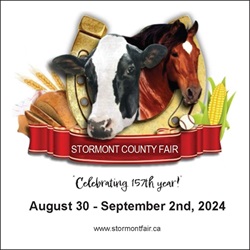‘Climate History, Climate Hope’ tour hits Royal Ontario Museum
Understanding our planet’s climate history is more than just a trip down memory lane — it’s essential to make sense of today’s world. Professor Soren Brothers draws the throughline at the Royal Ontario Museum (ROM) where he and museum volunteers often leads tours of the museum called “Climate History, Climate Hope.”
Brothers is the world’s first curator of climate change, a position created by the ROM three years ago. He called the tour Climate History, Climate Hope because he wanted to talk about the past and future, in relation to where we are now. “We are doing so many things that are heading in the right direction, which gives me hope,” said Brothers.
Brothers uses various artifacts and exhibits as stopping points, showing visitors how ancient climates shape our present and future.
The tour spans various galleries from the Dawn of Life, to natural history and arts and culture galleries. At each stop, Brothers talks about specific historical aspects of climate change and solutions. “Through these galleries, we can tell really interesting stories about just why we have climate change on our planet historically, and why we are dealing with these crises today,” said Brothers. “For some people, I think that could be a useful way to give context to clarify the situation and kind of simplify things in a way.”
Solutions are just as important for people to understand as the history, he said. “The solutions are not just hypothetical situations for the future, but finding ways to talk about what we are doing and what we have done.”
The objects on display are an important part of Brothers’ tour and will change as the museum’s various galleries evolve. “There is something evocative in objects that connects you to time, place and actions, and part of our reality.”
Connecting past, present and future
A fossil display of Carboniferous lycophytes in the Dawn of Life gallery represents Earth’s ancient climate history. These tree-like plants, thriving in swamps 350 to 400 million years ago, became today’s coal reserves. By absorbing carbon dioxide, they shaped earth’s climate, leading to an Ice Age, said Brothers. “We still burn trees from this period, as coal. This is still a major driver of climate change, and one of the most important places we must look to in mitigating the crisis.”
Brothers stated that because of the swampy nature of the world back then, a significant portion of organic matter from tree-like plants ended up preserved, and is now estimated to be the source of 85 per cent of the world’s coal reserves. “The rapid return of this stored carbon to the atmosphere by burning it is the primary source of today’s climate crisis,” said Brothers. “The planet’s environment is historically linked with life on Earth, what life forms are doing, and how they influence the climate through their relationships with the atmosphere.” The early forests from this period were key in dramatically reducing atmospheric CO2 concentrations, leading to an Ice Age, he added. “It has been roughly estimated that in an average year, we now burn as much coal as would’ve taken over 60,000 years of these tree-like plants to create.”
Soren Brothers is the world’s first curator of climate change, a position created by the ROM three years ago. He called the exhibit Climate History, Climate Hope because he wanted to talk about the past and the future. #ClimateHistory.
Clothing and textiles currently have an enormous negative impact on the environment, both directly through waste and water pollution and indirectly through their climate impacts, said Brothers. Photo by Abdul Matin Sarfraz/ National Observer
Brothers emphasized the power of personal conversation over social media and said the tour intends to foster dialogue and engagement with visitors about climate change.
“I really wanted the tour to be a way to talk to people about what is happening, what a huge monumental shift in our society is underway right now. And in a way that is really exciting, not to say we are necessarily going to solve the problem but just to give people a chance at least to be on the same page, seeing that there are changes happening.”
By Abdul Matin Sarfraz | News, Climate Solutions Reporting








